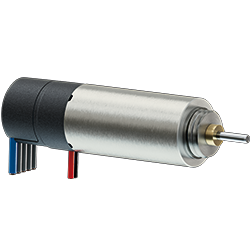Festo to Showcase Laboratory Automation Innovations at AACC 2017
Novel automated vial capping/de-capping option for the PerkinElmer JANUS Automated Workstation to be displayed at Festo Booth # 2661
At the American Association for Clinical Chemistry (AACC) 2017 at the San Diego Convention Center, July 30-August 3, Festo will showcase a new vial capping/de-capping option for PerkinElmers JANUS® series of automated liquid handling solutions. This new automated subassembly increases the speed and flexibility of the JANUS platform while reducing manual intervention. (Festo Booth #2661)
The JANUS G3 Varispan Automated Workstation offers multiple pipetting technologies on a single instrument platform. The instrument consists of a modular platform that expands with a flexible 4- or 8-tip Varispan™ arm, providing an automated liquid handling solution with flexibility in throughput, plate capacity, and dynamic volume range. This is a liquid handling solution that provides real-time and future adaptability in throughput, plate capacity, and dynamic volume range.
The co-developed capping/de-capping option is compatible and upgradeable with all JANUS systems and vial types. HPV vials are featured on the AACC demo machine. The demonstration shows the JANUS selecting a vial, scanning its bar code, de-capping it, and then moving the vial over to the area where it is aspirated and contents dispensed from the vial into a tube. At that point, the tube enters the extraction chemistry phase of processing. The JANUS platform with proprietary Modular Dispense Technology™ (MDT) delivers the following:
• Hands-off, "on the fly" adaptability in dynamic volume range and microplate densities for up to 1536 wells.
• Automatic switching, within a single protocol, to go from nanoliters to microliters in seconds, with no user intervention.
• Throughput and capacity easily adjusted and integrated with other accessories or instrumentation for complete "walk-away" automation.
• Precision pipetting with the widest dynamic volume range available.
"This field is under rapid growth and change," said Masoud Toloue, PerkinElmers Vice President/General Manager, Applied Genomics. "The world-class expertise of PerkinElmer in the genomics field and the toolset that Festo provides will enable both companies to rapidly adapt to changing market situations for the benefit of our customers. The two teams have initially focused on solutions in the clinical field that deliver automation innovation to manual processes. Together we will develop novel solutions."
Steve Fitterer, Laboratory Automation Segment Manager for Festo said, "Festo brings mechatronic and microfluidic control solutions along with engineering and subassembly capabilities to customers in the laboratory automation field. For these customers, the Festo subassembly-inside strategy offers the potential for lowering engineering requirements, reducing inventory, enhancing world class support, and ultimately to faster time to market and the ability to rapidly customize to end user requirements."
For more information on Festo, visit www.festo.com/us and the Laboratory Automation page.
###
About Festo
Festo is a leading manufacturer of pneumatic and electromechanical systems, components, and controls for process and industrial automation. For more than 40 years, Festo Corporation has continuously elevated the state of manufacturing with innovations and optimized motion control solutions that deliver higher performing, more profitable automated manufacturing and processing equipment.
Connect with Festo: Facebook, LinkedIn, Twitter and YouTube
Featured Product

FAULHABER MICROMO - Impressive accuracy through the latest chip technology
With the launch of the IEP3, FAULHABER expands its product line with an incremental encoder which, thanks to the latest chip technology, achieves a very high resolution and accuracy. With a diameter of just 8 mm, the IEP3 is very lightweight and compact yet still offers a resolution of up to 10,000 lines per revolution - made possible by the latest chip technology with high interpolation. In the standard version, the resolution is freely programmable from 1 - 4,096 lines per revolution. Moreover, the chip technology that is used ensures a high positional accuracy of typically 0.3 °m as well as a high repeatability of typically 0.05 °m thanks to accuracy compensation.
